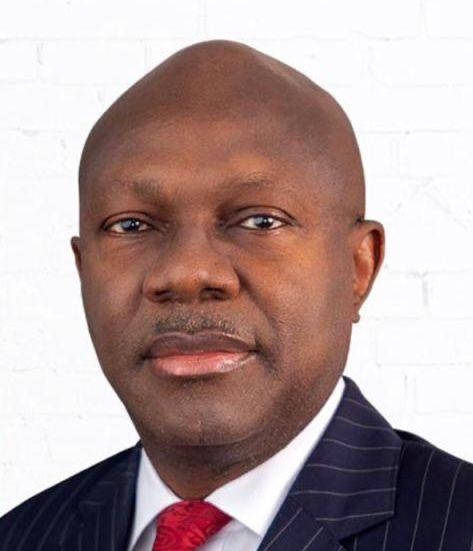The State of Bank Modernisation in Africa
By deploying a progressive and accelerated modernisation strategy, African financial institutions can fast-track their digital transformation to gain market share from mobile money operators, as well as deliver the level of customer experience needed to fend off neobank competitors.
Africa’s financial services landscape has undergone seismic change over the past few decades, supported by an ecosystem of regulators, incumbent banks, telcos, Big Tech and fintechs alike. Today, the continent is recognised globally as a hotbed of innovation, dynamism and resilience.
This is particularly evident in the mobile money space. Many highlight the way Kenya’s M-PESA led the world in rolling out digital wallets to the country’s unbanked population 18 years ago. As mobile money took off across the continent, many African markets were able to leapfrog payment cards, going straight from cash to mobile money, which had a positive impact on millions of people in terms of convenience, security and financial inclusion.
Yet despite the success of M-PESA and other similar initiatives, cash remains king in many countries.
Why does cash persist? Unstable internet connectivity and technology platforms is a pressing issue, for both mobile money operators and banks. Bank systems and mobile apps go down regularly, which negatively impacts customer satisfaction and trust in the financial system. The significance of stability is brought to life when you consider that a seven-day M-PESA outage is not just inconvenient for customers, it would actually impact Kenya’s economy, as 43% of GDP flows through the platform.
The enduring prevalence of feature or USSD phones is another challenge in sub-Saharan Africa. But the situation is slowly changing. Smartphone penetration rates have been increasing year on year over the past decade, driven mainly by access to cheap Chinese-made smartphones.
Despite these existential issues, incumbent African banks have focused on upgrading their digital offerings to compete with the telcos for customers’ mind share and market share.
And it’s not just the telcos that banks are up against. Neobanks have started attacking the weak points in the financial services value chain, such as foreign exchange, remittances and consumer credit. These challengers have an advantage in that they aren’t constrained by existing legacy operations, whether architecture, processes or people.
For example, Nigerian neobank Kuda Bank launched in 2019 with engineers and management in London, effectively connecting the dots and innovations between the two continents. While not yet big enough to take on the top five domestic players, Kuda has started to nibble away at their consumer base by delivering great service and transparency at a lower cost.
But the future hasn’t been written yet. There is still space for traditional banks to compete, if they can execute quickly.
Most African incumbents embarked on their digital journeys at least 10 years ago, with many appointing a chief digital officer to head up the transformation. Many annual reports include a five-year road map with comprehensive milestones.
In general, there are two main modernisation strategies, which aren’t mutually exclusive per se.
One option is to build a ‘speedboat’ or enterprise greenfield project, which is a separate entity with a new brand aimed at a specific market segment that operates alongside the main institution. Greenfields have been very popular in Southeast Asia, for example, because there was huge demand from the population for modern and better banking experiences, which the incumbent banks in the region identified as a business opportunity.
Several African banks have tried to launch enterprise greenfield projects, such as separate mobile apps, but these have gained little traction to date. Generally, this wasn’t because the strategy was wrong per se but the execution was poor because they used legacy technology, processes and people. As such, they ended up spending a lot of money and time creating the same thing with a slightly different look and feel.
Instead, banks could use a digital accelerator, such as Plumery, to launch a tailored platform for Gen Z clients, for example, in two to four months. By leveraging external support, incumbent banks can reduce the risk of massive investments and long timelines, as well as potentially capitalise on market developments.
The other option is to create change from within the institution’s existing architecture and leverage technologies that support progressive modernisation and a multi-core strategy. In this way, banks don’t have to take a high-risk revolutionary approach to modernisation, but can transform quickly in an evolutionary manner.
For example, a digital accelerator could act as a bridge between today’s business-as-usual reality, such as feature phones and cash, and fully digital, smartphone-based interactions by providing a platform that can support both worlds.
On the inside of an institution, a digital accelerator can facilitate progressive modernisation without changing the core banking system. On the outside, it can support digital transformation by serving different customer segments.
African banks not only need to accelerate their digital transformation but also change their perception that legacy technology is holding them back. It is possible to be innovative without replacing their core banking infrastructure. Implementing a multi-core strategy means that a bank can start lean and gradually add new cores for specific products.
As such, replacing core banking systems doesn’t have to be a bank’s starting point. While the institution may want to do that along the way, it can begin by adding additional core banking systems. Instead, the starting point should be delivering an exceptional customer experience as quickly as possible.
Many Africans don’t trust the incumbent banks due to the long history of financial exclusion, but they do trust the telcos and they may trust a newer brand, such as a neobank. However, if the incumbent banks could turn that sentiment around, scale the trust and deliver tailored and reasonably priced products and services, that would motivate and incentivise a new generation of customers to bank with them.
Written by











